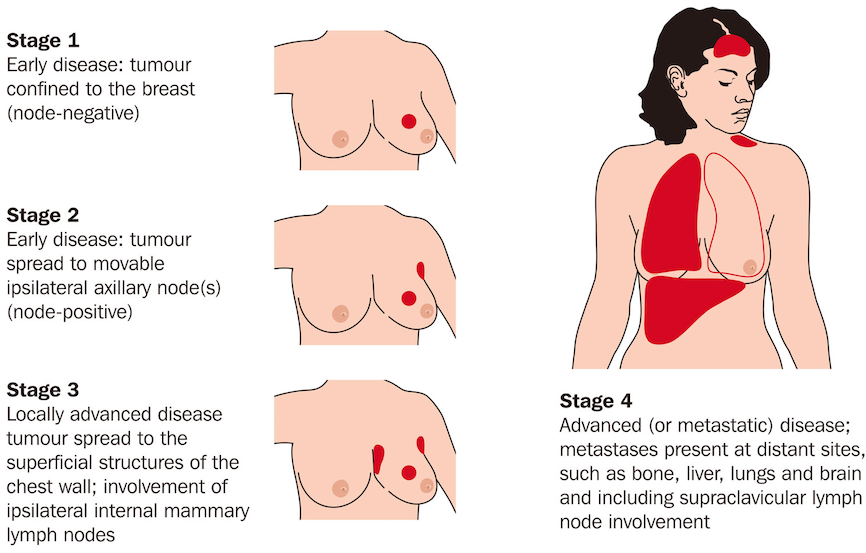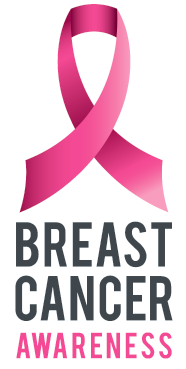Stages of Breast Cancer

The stages of breast cancer can be broken up into 5 phases, usually termed Stage-0 to Stage-IV.
- In stage 0, there is no observation of the cancer cells breaking out of the part of the breast from where they originated. They do not appear to be invading the neighboring normal tissue.
- Stage I denotes the beginning of the invasiveness of the cancer, where it is beginning to break through normal tissue. It is divided into 1-A and 1-B. 1-A denotes an invasive cancer where the tumor can measure up to 2cm and has not spread outside the breast. I-B refers to smaller groups of cancer cells present in the lymph nodes or breast tumor, which is less than 2cm.
- Stage II is further categorized into II-A and II-B. While both of these are invasive, II-A denotes the tumor being found in the breast and lymph nodes and size of up to 2cm. II-B denotes an increase in size of up to 5cm.
- In stage III, the cancer may have spread up to 9 auxiliary lymph nodes, might have created an ulcer and may be larger than 5cm.
- Stage IV is the final stage of breast cancer and indicates its spread beyond the breast and its nearby lymph nodes to other body organs, such as skin, bones, lungs, liver, distant lymph nodes, or the brain. You might hear the words “metastatic” or “advanced” used to describe stage IV breast cancer. This stage could also signify recurrence of an earlier breast cancer that has spread.
Your pathology report will include information about the stage of the breast cancer — that is, whether it is limited to one area in the breast, or it has spread to healthy tissues inside the breast or to other parts of the body. Your doctor will begin to determine this during surgery to remove the cancer and look at one or more of the underarm lymph nodes, which is where breast cancer tends to travel first. He or she also may order additional blood tests or imaging tests if there is reason to believe the cancer might have spread beyond the breast.

